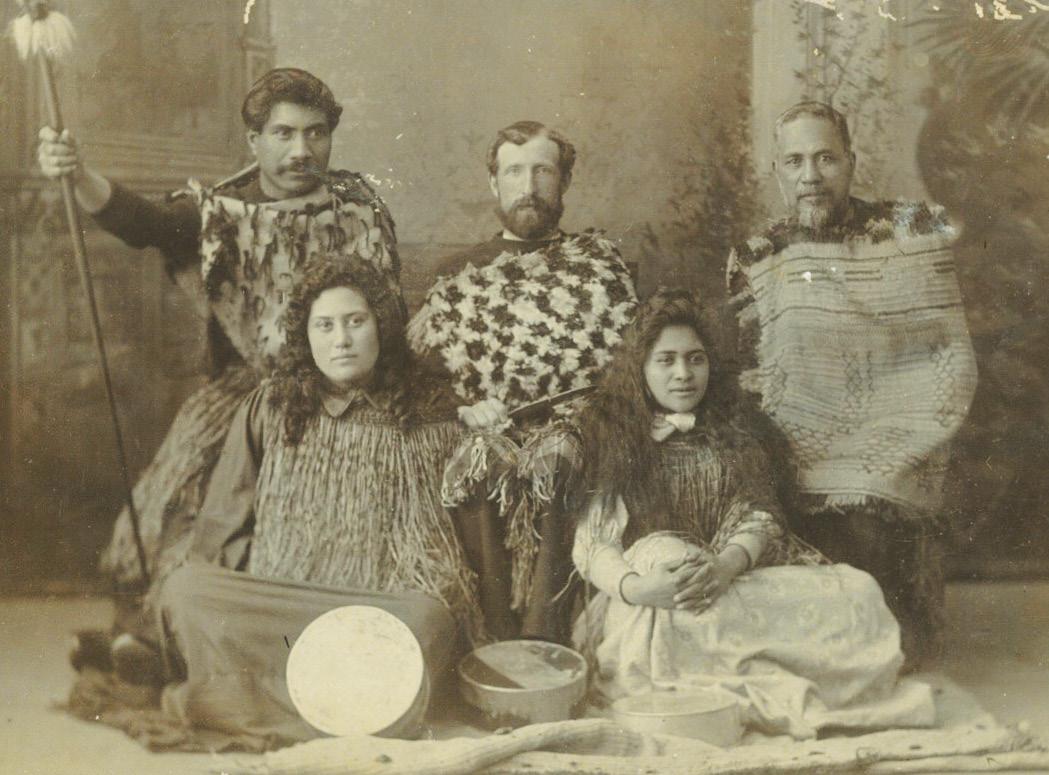
3 minute read
Carrying the Message to Australia
The Salvation Army has a rich and varied history which is preserved at the Heritage Centre and Archives (Plowman Research Centre). This edition looks at The Salvation Army’s early interactions with tangata whenua (Māori; people of the land), and in particular the Army’s Māori Party and their evangelical tour of Australia in 1895.
The Māori Party was established in 1895, with five initial members, many of whom were connected earlier to the Māori Ministry work of the Army, which was founded in 1887. Captain John Nicholls, who headed up the party, was one of a group of young men who followed and served with Captain Ernest Holdaway in Whanganui. Cadet Maraea Tamatea, the daughter of Chief Tamatea of Ngatihau-nui-aPaparangi, began work with two others as single women officers in Māori Ministry in Ōtaki.
This party was created to be used for an evangelical tour of Australia. The 20 April 1895 edition of War Cry included a report on this trip from Major Bruntnell: ‘Some time back, we referred to the decision of our Commandant to take over a band of our dear Māori comrades to the other Colonies. I am now in a position to give the names, etc., of those who will form the party, and certainly think Maoriland will be thoroughly and truly represented. First of all, Captain Nicholls, who has had long experience in the Māori War, and who understands the language properly, goes in charge of the party, which comprises Lieutenants Tamatea, Aterea, Cadet Stirling, and Brother Wini Grey. They sail from Auckland for Sydney in the S.S. Mararoa, on April 30th, and we wish them every blessing and success. Amen!’
The party spent seven months in New South Wales and Victoria, and then two months in South Australia. Ivy Cresswell’s book Canoe on the River states that ‘over three hundred people sought salvation and many others claimed the blessing of a clean heart during their meetings’. There was even a mention of a young man who walked 70 miles to see the Māori Party and attend one of their meetings.
Harold Hill’s collection of Salvation Army documents in Te Ope Whakaora says the following about their travels.
‘Early in 1895 Captain John Nicholls, one of Holdaway’s young comrades from the Whanganui River days, led a Māori party on a very successful evangelistic tour of New South Wales and Victoria. The young vocalist in the party, Sarah Stirling from Riverton, caused something of a sensation by the beauty and power of her singing. Both her parents were of part-Māori descent and her grandfather, Captain William Stirling, a whaling captain, has contributed much to the development of the port of Bluff.’
A particularly striking reflection from one of the members of the party, Brother Wini Grey, is noted in Ivy’s book, which considers how their perceived differences did not matter when it came to sharing the gospel:
‘When we went to Australia, people would come miles to see us—thought we would have one eye and one leg, or something like that; but when they saw us they said, “Why, they’re just like us!” … And when they heard the two girls speak in English they thought it was just wonderful. Many years ago the Europeans brought us the message of the gospel, and now we have been to them, carrying the same message of salvation.’










